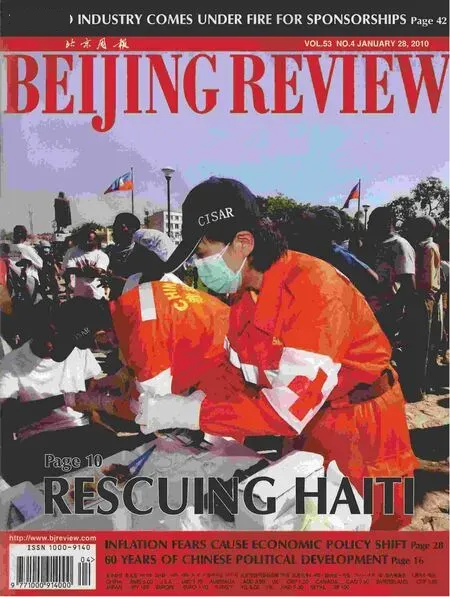CRISIS FOCUS:RISKS TO RECOVERY
2010-12-27
A sustained recovery of the global economy at a slow but steady pace should be expected in the first quarter of 2010, according to the quarterly report on global economic and financial outlook compiled by the International Finance Research Institute of the Bank of China. But three risks stand out, the report said, that threaten recovery efforts: the sovereign credit crisis,growing inflation pressures and increasing numbers of small and medium-sized U.S. banks filing for bankruptcy.
The sovereign credit crisis refers to the specter of sovereign debt defaults.Statistics show sovereign debts have totaled more than $35 trillion worldwide,with the debt-to-GDP ratio hitting a record high in some major economies. Credit rating agencies cut the sovereign debt rating for Mexico, Greece, Portugal and Spain after the Dubai Government abruptly announced its plan to delay debt payments in November 2009. Also held in question are debts of major developed economies such as the United States, United Kingdom,Germany and France due to large aggregates in their public debts.
A balanced budget will be essential for these sovereign entities to avoid a serious debt debacle. But, given the high unemployment rate and yet-to-be consolidated economic recovery globally, it could probably prevent further growth if measures such as mild interest rate hikes are adopted to squeeze liquidity and stabilize the financial market. The crisis involving governments’ balance sheets is replacing the banks’ balance sheet crisis to become the largest risk. Governments have to find feasible and reliable solutions as soon as possible to avoid a new round of trust crisis from the market on their capabilities in controlling escalating public debts.
In terms of growing inflation pressures, inflation in its truest sense didn’t sweep the globe in 2009 because the global economy hadn’t shaken off the recession or anemic consumption and the capital market remained turbulent. But inflation could emerge as a threat to the recovery this year because commodity prices will remain high. It’s also more likely that major reserve currency issuers will print more money to pay off debts, a move that will only aggravate the problem of excess liquidity.
As for the banks’ bankruptcy, the amount of consumption credit and writing off commercial housing loans are beginning to surge and will continue to do so in the future. Since deterioration in the quality of these loans generally lags behind other forms of credit and lasts for a longer period, retailing and commercial loan losses will emerge later than securities asset losses. As a result, bad credit liquidation could replace securities asset liquidation to be the major pressure on the banking sector in the first quarter and throughout the rest of the year. Predictions hold that the bankruptcy trend among U.S. small and medium-sized banks will continue as commercial loan losses expand, the number of mortgage delays hits a record high and mortgage defaults increase sharply.Large banks are speeding up merger and acquisition negotiations to shake off the crisis as quickly as possible, which will lead to a new round of capital market consolidation and speed up the banking sector’s concentration and monopoly power. ■
